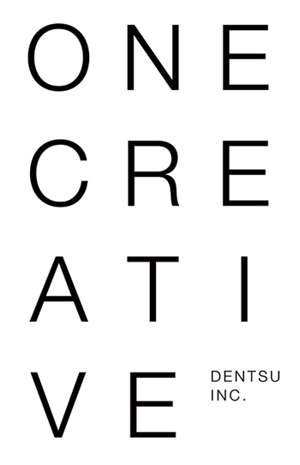January 26 - February 8, Vol.1 of the "ONE CREATIVE" art exhibition by Dentsu Inc. creators was held at galerie H in Nihonbashi, Tokyo.
This project explores what happens when creators who normally make advertisements give shape to what springs from within them, rather than solving client problems. For the second installment in the series, we spoke with Creative Director Masumi Nakazawa of Creative Planning Division 2.
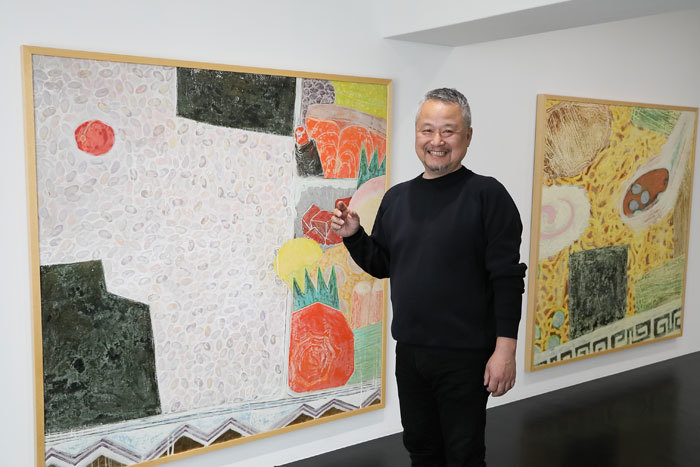
Creative Director Masumi Nakazawa
Mount Fuji and pudding.
Upon entering the gallery, massive works—each side nearly as tall as a person—immediately catch the eye. Though painted with traditional Japanese art materials like mineral pigments and gold leaf, the motifs feel distinctly contemporary.
──What inspired you to create these works?
Japanese painting, influenced by Tang Dynasty Chinese art, evolved into Yamato-e around the Heian period. Yamato-e drew its motifs from Japan's landscape, the lives of its people, stories and waka poetry, the origins of temples and shrines, and Buddhist paintings.
As a descendant of this lineage, I felt I should paint Yamato-e depicting the Japanese landscape and the lives of the people as I perceived them—leaving aside tales and waka poetry.
For example, Mount Fuji as a subject.
By the Muromachi period, paintings featuring Mount Fuji as a central motif began to appear. Then, during the Edo period, as Mount Fuji worship became widespread, mass-produced Fuji pilgrimage mandala paintings emerged. How should I confront this motif, painted by Katsushika Hokusai, and later by Yokoyama Taikan and Kataoka Kyuko?
What about pudding? I suddenly thought.
In paintings that treat Mount Fuji as their central motif, I could replace Mount Fuji with pudding. That'll do.
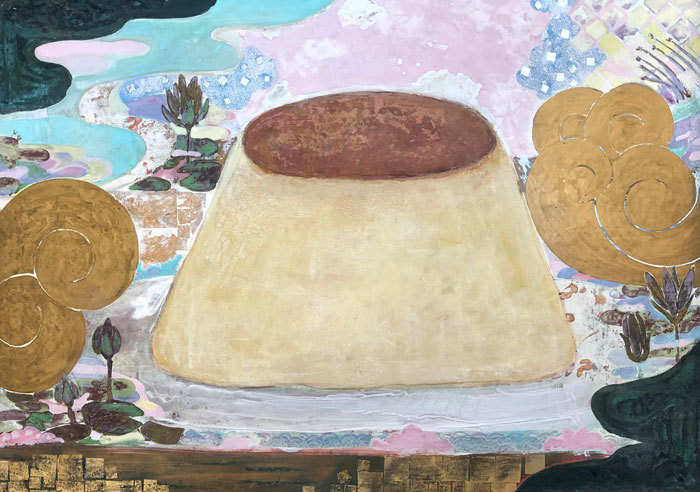
Work: "Cape Town Pudding"
People in the Edo period, when paintings of Mount Fuji were hugely popular, could probably draw Mount Fuji from memory. Modern people can also draw Mount Fuji from memory, but similarly, they can draw pudding from memory too, right? People in the Edo period couldn't draw pudding.
I'm replacing the motif of Mount Fuji—an icon of Yamato-e—with the icon of pudding. This is an approach only possible for me, a modern person.
With this casual approach, I launched my own version of "Yamato-e." Later, I continued creating by replacing the composition of Japanese gardens with the arrangement of convenience store bento boxes, and substituting the ripple patterns of the Rimpa school with ramen noodles.

Work: "Makunouchi-Lunch"
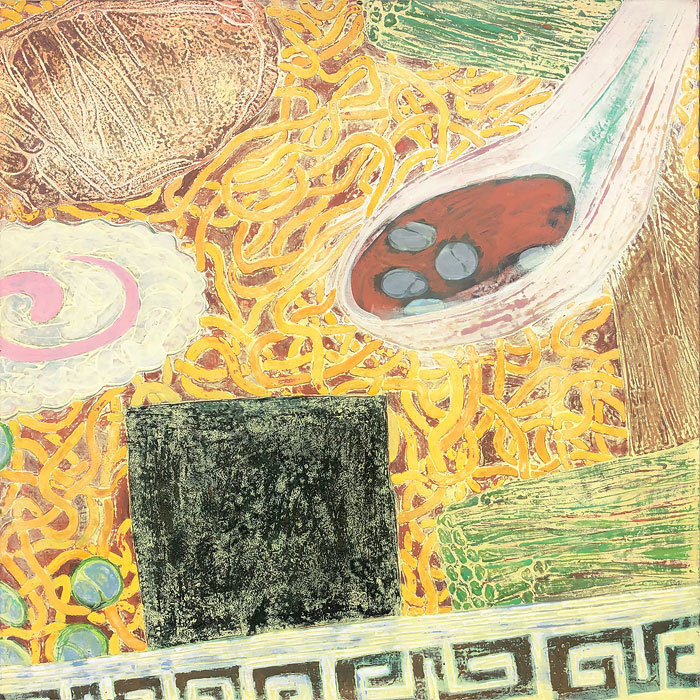
Work: "Soy Source Ramen"
──I see! That's why the bento box and ramen are depicted so large. Now that you mention it, the rice in the bento box does look like a rock garden. There are also other modern motifs that likely wouldn't have been depicted in traditional Japanese paintings.
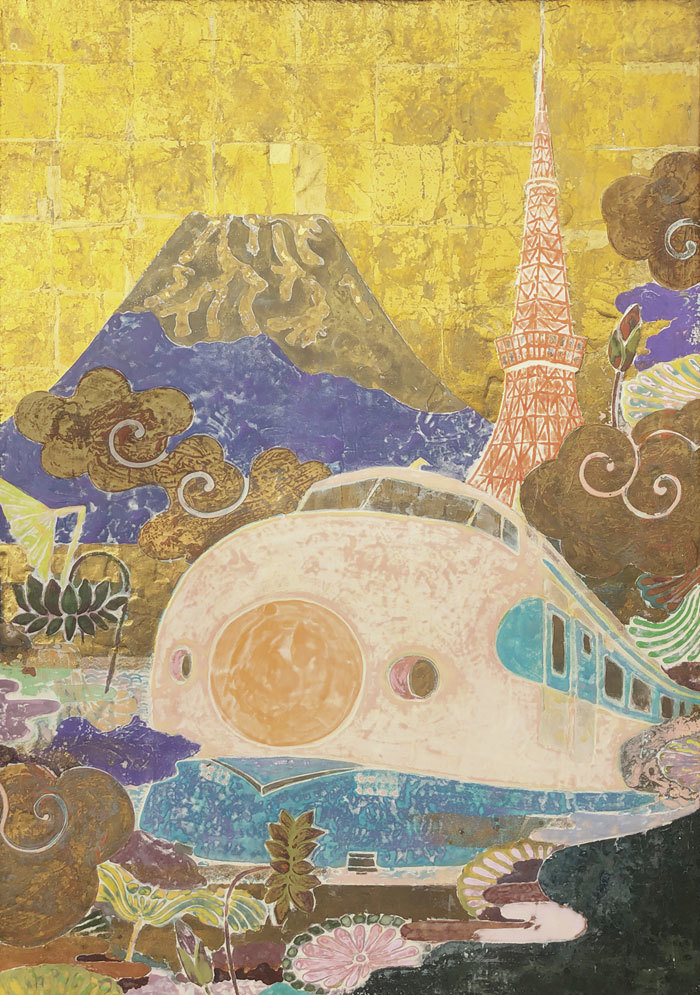
Work: "Sunny Day Shinkansen"
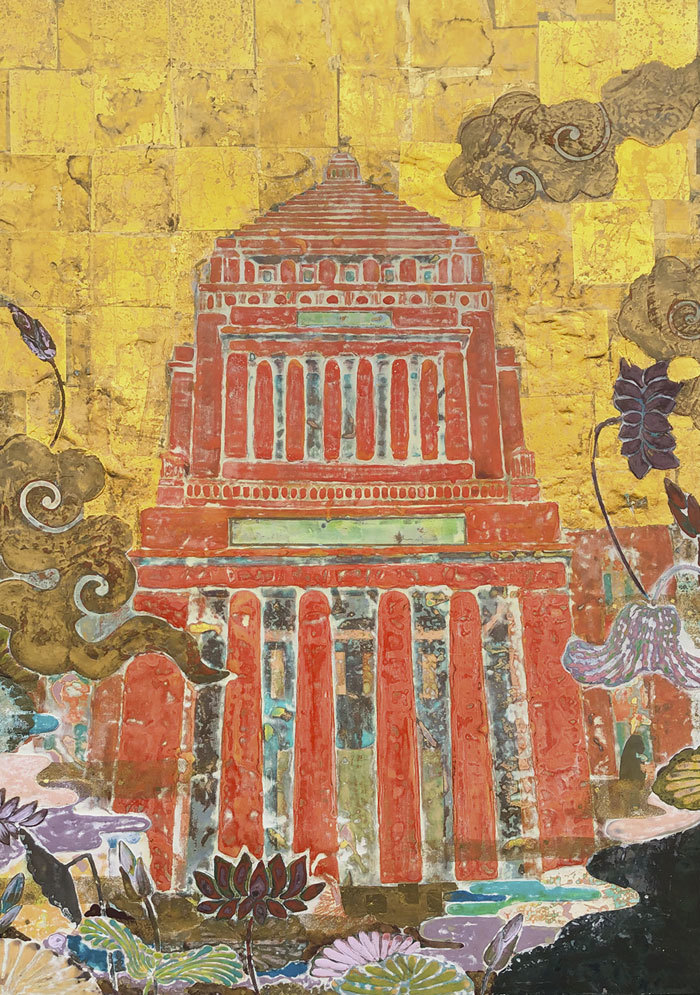
Work: "Hot Day Parliament Building"
──You're usually active as an art director and creative director, but how do you work as an artist?
As a painter, I challenged myself to enter open-call exhibitions. For about ten years after joining the company, I consistently submitted two or three pieces annually. If I won an award and received prize money, I would hold a solo exhibition. After that, my main job as an art director became busier, so I took a break. Recently, I've started painting again.
The rational part and the intuitive part
──Balancing advertising work and artistic pursuits must be incredibly demanding time-wise. What benefits have you gained from having these two roles—advertising creator and artist?
Advertising involves collaboration with photographers and illustrators, and it's created based on client requests. For me, there's no personal motivation; I don't get my hands dirty. It's purely intellectual. With painting, the motivation to create is intrinsic to me; I actively move my hands. I use my head too, but not in the rational way I do for advertising. It's more like enjoying a daydream. I suspect my painting side influences my function as an art director. This characteristic of being an art director grounded in painting forms the individuality of my advertising visuals.
──If you have any plans for future artistic activities, please tell us.
Right now, I'm applying paint to about 30 panels. I might be able to hold a solo exhibition in about a year. Before that, I'm thinking of challenging myself again with some open-call exhibitions.
──Thank you very much.
Yamato-e continues to evolve.
Traditional painting techniques passed down through the ages meet new motifs. By blending these across time and space, Nakazawa's originality emerges. We look forward to seeing how Nakazawa's ongoing challenges unfold in the future.
This series introduces the diverse sources of creativity among Dentsu Inc. creators. Vol.2 features the work of Wakata Noe, Kubota Emi, and Hirata Yu.

